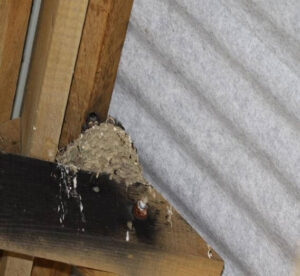Significant gains in biodiversity were reported at Pras Trewolek, the wildflower meadows created as part of the Duchy’s Nansledan community in Cornwall.
The Duchy of Cornwall is delighted to share news of significant gains in biodiversity at Pras Trewolek, the 75 acre farmland transformed into an outdoor haven for wildlife and walkers at the edge of their sustainable Cornish community, Nansledan (www.nansledan.com). Following the Duchy’s annual bird and habitat survey carried out in July 2023, important developments to the ecosystem were reported, demonstrating that their green infrastructure strategy was generating positive impacts on local communities and the natural environment.
Transformed into an environmental asset where the community can reconnect with the natural world, Pras Trewolek promotes biodiversity, health and wellbeing and is home to kilometres of pathways, trees, viewing platforms and 50 acres of rewilded meadows grazed by native breeds of cattle. By working closely with the tenant farmer and estate team on projects to restore hedgerows and introduce wildlife attracting measures, both flora and habitat is recovering and impressive wins have been noted. At Nansledan, the Green Infrastructure Strategy is expected to deliver an overall increase in habitat “units” of around 24% and an increase in hedgerow “units” of around 48% far exceeding the Government’s 10% requirements for Biodiversity Net Gain in development.
Ben Kite, MD and lead ecologist at Ecological Planning and Research Ltd stated, “The area is now species rich and astonishingly the nationally rare plant Whorled Caraway is found to be widespread and flowering, whilst near threatened species including Ragged Robin and Lesser Spearwort have been found alongside other plants of old.”. Rather excitedly Ben went on to add that “what is believed to be a hybrid of a Rose that is very rare in Cornwall, Harsh Downy-Rose, has been identified and plans are in motion to collect cuttings and seed and to propagate so that they can be incorporated into the planting palette for the neighbouring Nansledan development.”
A further positive story can be told of bird fauna as numbers and species continue to increase. Multiple flocks of perhaps 300 Goldfinch were seen, Barn Owls and significant numbers of Swallow, some nesting in the newly created wildlife hide were sighted. Red listed birds of conservation concern, House Martins were found hawking insects and breeding Yellowhammer are also believed to have increased, whilst a pair of Stonechat were found to be using one of the newly created hedgerows and a hunting Kestrel was also observed.
These bird numbers are supplemented by an average of one bird box per home integrated into the external walls of new homes on Duchy development projects, as a result of a partnership the Duchy formed with the RSPB in 2016. More than 1000 of these nestboxes have been installed so far with 363 showing signs of use last year (2022), an increase of 7% on the year before Nansledan.

The improved vegetation at Pras Trewolek has also attracted large numbers of butterflies and moths. Meadow Brown butterflies and 6 Spot Burnet Moths were visible during the survey and a growing list including Painted Lady, Peacock, Speckled Wood, Common Blue, Small Tortoiseshell and Small Skipper have also been recorded. Evidence of bats was also found at the entrance to the newly created wildlife tower showing that bats have likely taken residence and are occupying it as a roost.
Upon hearing news from the latest ecology reports Ben Murphy, Estates Director for the Duchy of Cornwall said “It is wonderful to see the Duchy of Cornwall’s vision to ensure sustainable stewardship for communities, enterprise and nature, being delivered through the great work of colleagues and the community of Nansledan. We are working hard to extend these initiatives across the wider estate and we hope to the community of South Estate Faversham in due course”.





